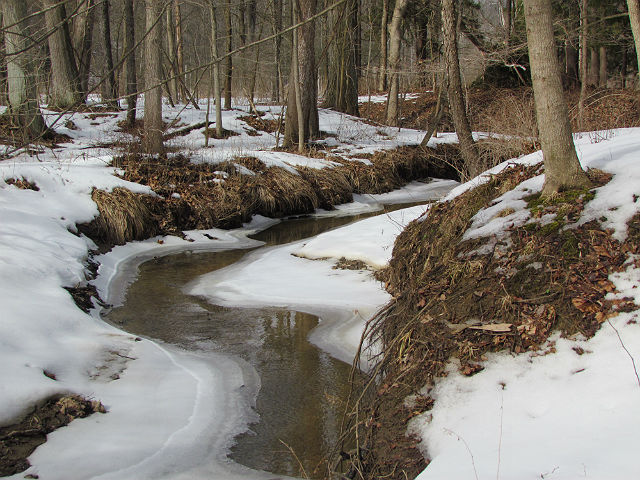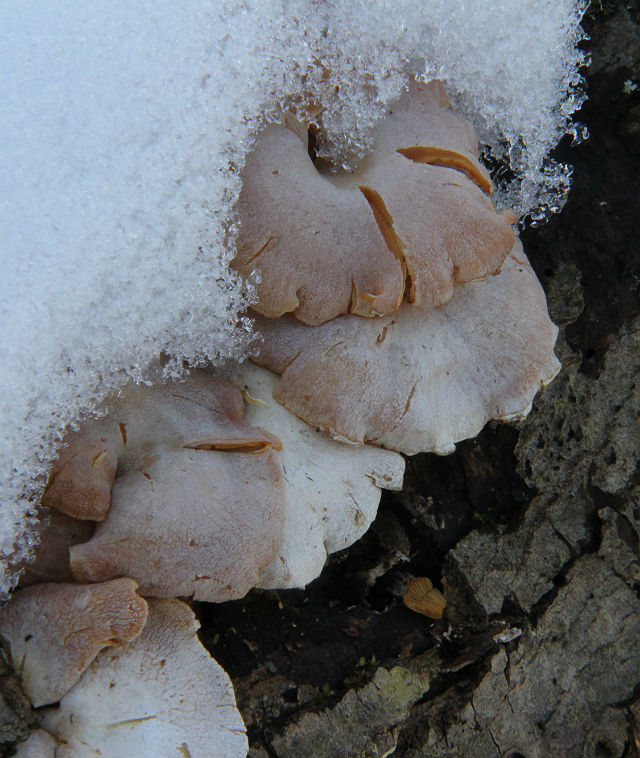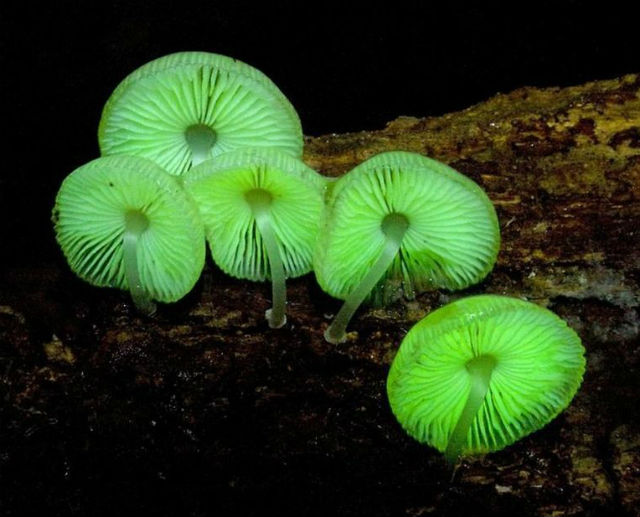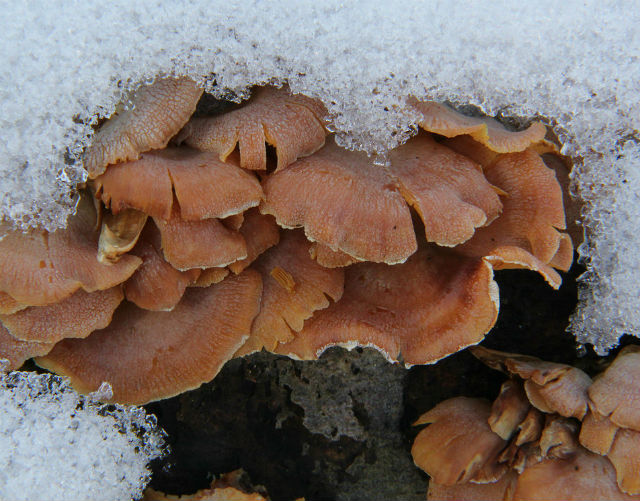Bitter Oyster is a widely distributed fungus that is also known as Luminescent Panellus, Stiptic Fungus, or Astringent Panus. It is more common in eastern North America than in the west. It frequently grows in groups, residing in dense forests. It is often found on logs, stumps and trunks of deciduous trees such as Birch, Oak and Beech.
This little mushroom has reportedly been used as a styptic (blood thickening) agent. It is a relatively common species that is prevalent Spring through Fall (it can also be found in Winter in warm climates, or during Winter warm spells in temperate areas).
Bitter Oyster is an unassuming fungus by day. It forms waves of soft beige shelves and blends in with its surroundings. The edges of the mushroom cap have small rounded teeth that are curved inward. But at night things change; its gills, under their own power, glow – a characteristic known as bioluminescence.
The luminescent glow of this and other fungi inspired the term “foxfire,” coined by early settlers in eastern and southern North America. Although generally very dim, in some cases foxfire is bright enough to read by. Bitter Oyster is a pretty cool organism that often goes unnoticed in today’s world.




